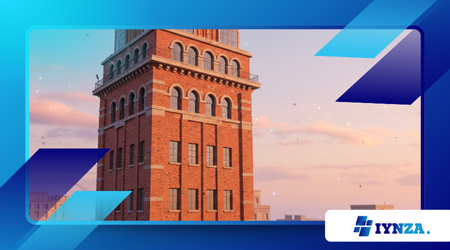Why ‘Pizza Tower’ Isn’t Just a Nostalgia Trip

When I first launched Pizza Tower, I expected chaos. What I didn’t expect was a complete rewiring of what “retro-inspired” truly means.
Anúncios
On the surface, it looks like a fever dream of 90s aesthetics: crunchy pixels, squishy animations, a protagonist who seems halfway between a Looney Tune and a man on the edge. But the moment you start playing, you realize it’s not mimicking retro—it’s mastering it, mutating it, and daring you to keep up.
Where most games wear nostalgia like a costume, Pizza Tower rips it apart and rebuilds something new. It feels like the 90s, but it plays like a product of today’s sharpest indie minds.
The movement is tight, aggressive, full of speedtech potential. The levels aren’t just weird—they’re layered, alive, and absolutely deranged in the best way possible. And the soundtrack? A masterpiece of sonic whiplash that somehow never feels out of place.
The Art of Controlled Chaos: Mechanics Beyond the Madness
What makes Pizza Tower more than a visual homage is how it understands what made retro platformers fun. You’re not just running and jumping.
You’re flowing—sliding through corridors, smashing walls, combo-chaining enemies while constantly building momentum. Every room is a puzzle of speed and rhythm. Mess up and you crash. Nail it, and you feel like you’re breakdancing through pixels.
This game rewards experimentation. It doesn’t punish you for going off-script. You’re allowed—no, encouraged—to break the rules, skip parts of levels, and find ridiculous shortcuts. It’s not linear. It’s not safe. And that’s what makes it exhilarating.
Unlike many retro-likes that slow down to show off their art, Pizza Tower begs you to keep moving so fast you almost miss it.
Read also: Why Retro Gaming is a Timeless Hobby for All Ages
A Visual Identity That Doesn’t Apologize
Retro-style games often lean on familiar palettes and sprite conventions to evoke nostalgia. Pizza Tower does the opposite.
It’s bold. Gaudy. Almost uncomfortable. And that’s the point. It channels the strange, grotesque energy of early 90s cartoons—think Ren & Stimpy meets Wario Land 4—and weaponizes it.
Each animation is absurdly expressive. The game constantly morphs, stretches, and exaggerates its visuals to match your pace. It’s not trying to be pretty. It’s trying to be loud.
And somehow, this visual cacophony works in perfect harmony with the gameplay, creating a feverish cohesion that few other games dare attempt.
Speedrunning and Skill Expression Redefined
What starts as chaotic fun quickly reveals itself as one of the most precision-oriented platformers in recent memory.
The speedrunning community embraced Pizza Tower almost immediately—not just because it’s fast, but because it’s deep. Every level offers infinite routing opportunities. Movement isn’t just about holding forward—it’s a dance of dashes, dives, wall-hops, and launches.
The most skilled players turn each stage into performance art. And for newcomers? There’s freedom in failing fast and retrying instantly. No lives. No loading. Just relentless momentum and the thrill of mastery. It’s the kind of design philosophy that keeps players engaged for hours without ever feeling punished.
Sound That Pushes You Forward
Music in Pizza Tower is its own kind of propulsion. Tracks don’t sit in the background—they slam into you. Each stage pulses with energy, with melodies that feel ripped from a forgotten Saturday morning show on acid. The way the soundtrack evolves as you pick up speed or enter “escape” mode is genius. It transforms the entire game feel—suddenly, you’re not playing to win, you’re playing to perform.
Even the menu themes have edge. Every note seems designed to shake your expectations and then shove you back into the game. This isn’t lo-fi ambiance. It’s high-octane madness with perfect timing.
The Bigger Lesson: Retro-Inspired Doesn’t Mean Looking Back
Here’s the real takeaway from Pizza Tower: being retro-inspired isn’t about copying old games. It’s about understanding their spirit—and pushing it into new territory. This game doesn’t rely on nostalgia to carry it. Instead, it weaponizes your familiarity and uses it to surprise you at every turn.
You might think you’ve played platformers like this before. You haven’t. Pizza Tower is what happens when passion, irreverence, and mechanical brilliance collide. It’s a love letter written in fire, sweat, and grease.
Why It Matters for Modern Game Design
So many indie games still believe the road to players’ hearts is paved in pixels alone. But Pizza Tower shows that aesthetic is only part of the equation. The magic lies in rhythm, flow, and letting the player feel like they’re improvising through chaos with style.
It reminds developers that risk can be reward, and that polish doesn’t mean restraint. Games don’t need to look like Pixar or feel like AAA blockbusters to earn praise. They just need vision. And Pizza Tower has that in spades.
The Future of Platformers After Pizza Tower
Pizza Tower didn’t just revive a style—it rewrote expectations. After years of polished but formulaic platformers, this chaotic indie hit reminded the industry that platformers can still be unpredictable, aggressive, and joyfully unhinged. Now, the question is: where do we go from here?
The ripple effect is already visible. Developers are paying closer attention to how movement feels, not just how it looks.
Momentum, expression, and flow are being prioritized over tight corridors and rigid mechanics. The success of Pizza Tower signals that players are craving more freedom—games that trust them to move fast, experiment wildly, and master their own playstyle.
But copying Pizza Tower won’t be enough. The real lesson is that bold design pays off when it’s backed by technical mastery and heart.
The future of platformers won’t be defined by pixel art alone, but by creators who dare to disrupt, to provoke, and to give players something they’ve never quite felt before.
Expect more experiments. Expect more speed. And most of all, expect a new wave of games that don’t just pay homage to the past—but twist it into something wildly, wonderfully new.
FAQ: Questions About Pizza Tower
What is Pizza Tower inspired by?
It takes strong cues from Wario Land, 90s animation, and fast-paced platformers—but blends them into something entirely original.
Is Pizza Tower a good game for casual players?
Yes. While it rewards skill, it’s accessible and forgiving—perfect for players who want fun without harsh penalties.
Does Pizza Tower have a story?
There’s a light narrative, but it’s secondary to the gameplay. The charm comes from its chaotic tone and expressive characters.
What platforms is Pizza Tower available on?
As of now, it’s available on PC via Steam. Console ports may be possible in the future.
Why is Pizza Tower gaining so much attention?
Because it nails what retro-inspired games should feel like—fresh, risky, fast, and genuinely fun.
